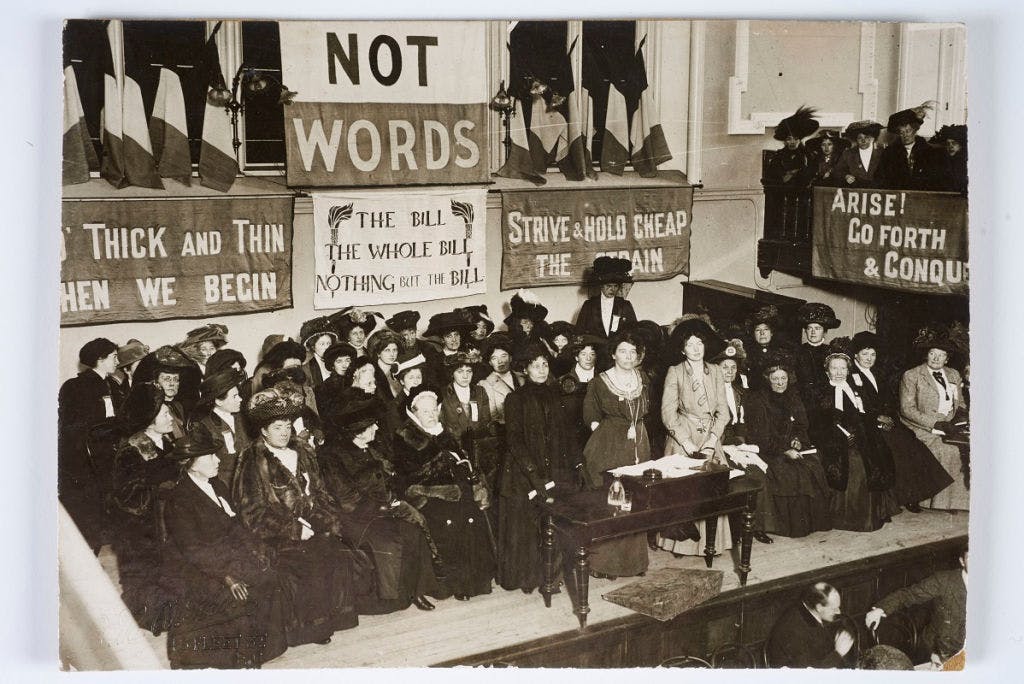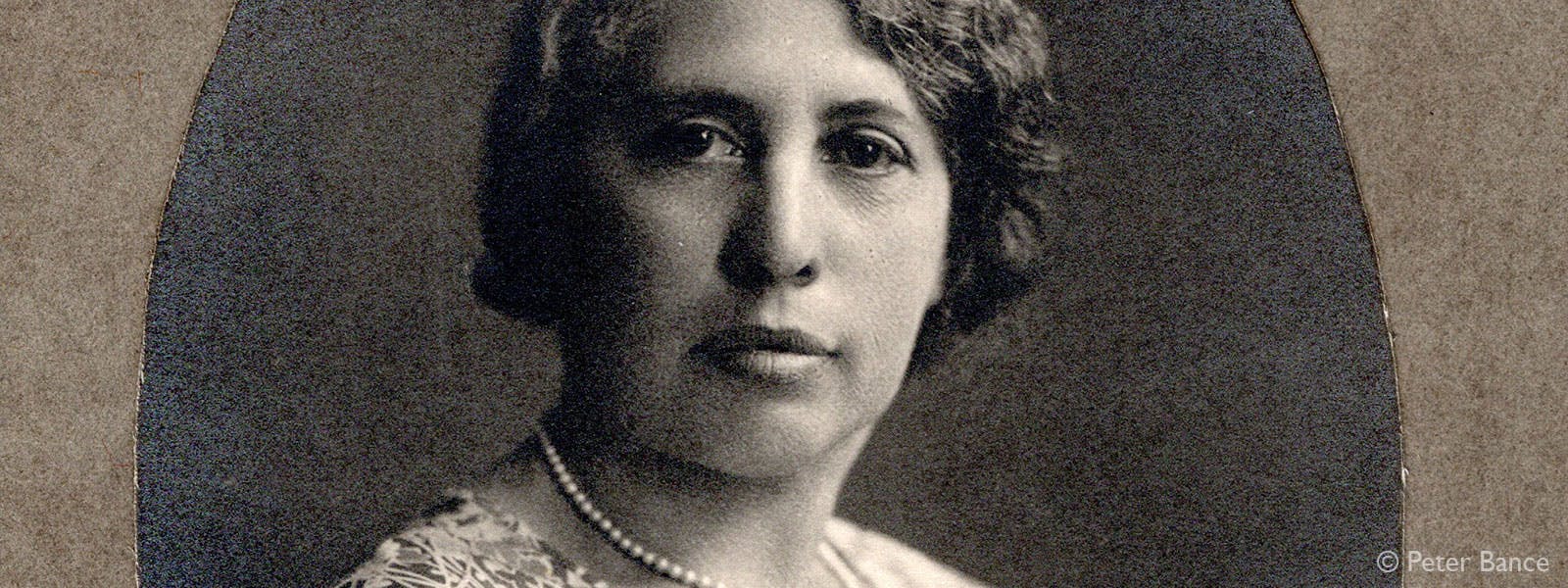
The Indian Princess who fought for women’s rights
Princess Sophia Duleep Singh is best known as a suffragette and campaigner for women's rights. Daughter of deposed Maharaja Duleep Singh and goddaughter of Queen Victoria she used her fame, position and tenacity in the fight for gender equality in the early 20th century.
Sophia's campaigning attracted the attention of both the press and the government. Her tireless activities ranged from participating in landmark historical events such as 'Black Friday' to routinely selling copies of The Suffragette newspaper outside Hampton Court Palace.
Sophia's philanthropy extended far beyond women's rights and she supported many groups, particularly Indians and Sikhs wherever she encountered them. Her life was truly dedicated to the fight for equality and the support of others.
Header image: Sophia in 1930. © Peter Bance

Early life
Sophia Jindan Alexandrovna Duleep Singh was born on 8 August 1876, the daughter of Maharaja Duleep Singh and Bamba Müller.
Maharaja Duleep Singh was the last Maharaja of Lahore, deposed by the British at the age of 10. Bamba Müller was the illegitimate daughter of a wealthy German banker and an enslaved Abyssinian (Ethiopian) woman named Sofia.
In 1854 the deposed Maharaja travelled to England, and was naturalised as a British Citizen. He lived on a pension of £25,000 a year which he was granted provided he 'remain obedient to the British Government'.
Image: Sophia Duleep Singh as a baby with her mother, Maharani Bamba. © Peter Bance
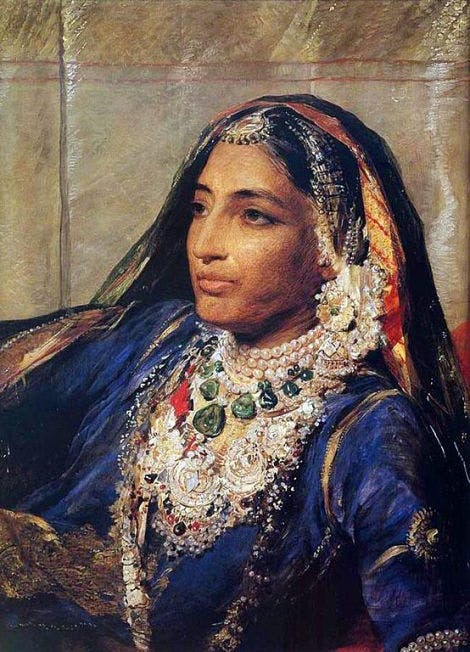
Sophia's names show a truly international and remarkable family history: Sophia, after her enslaved Ethiopian maternal grandmother; Jindan, after her paternal grandmother, Maharani Jind Kaur; and Alexandrovna, after her godmother Queen (Alexandrina) Victoria.
Image: Maharani Jind Kaur, (1817 - 1863), also popularly known as Rani Jindan, grandmother of Sophia Duleep Singh. She was the youngest wife of Maharajah Ranjit Singh and the mother of Sophia's father, Maharajah Duleep Singh. History / Topfoto

An unstable childhood
Sophia's early childhood was spent in Elvedon Hall in Suffolk, which was purchased by her father in 1863. The Elvedon estate provided the family with all the pastimes expected by the English aristocracy, particularly riding and shooting.
The house itself was rebuilt by her father with an Italianate exterior and palatial Mughal interior, full of rich textiles and furnishings. It must have been a truly wondrous place to be a child. Outside, exotic animals and birds roamed the gardens including golden pheasants, parrots, and peacocks.
Image: The interior of Elvedon Hall, Sophia's childhood home. PA Photos / TopFoto
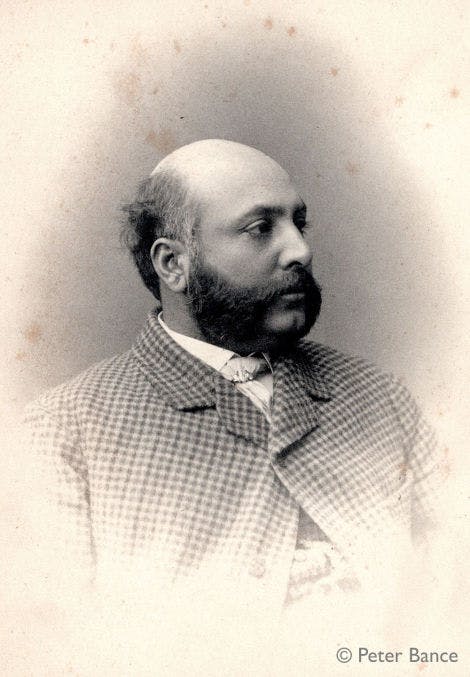
The Death of Bamba Müller
This fantastical childhood was not though to last. Sophia's parents' relationship broke down and Maharaja Duleep Singh spent the last six years of his life in Paris, campaigning to be returned to the throne of Lahore.
Worse still, in 1887 Sophia's mother Bamba died, after which the children were in the care of the Arthur Craigie Oliphant, chosen by Queen Victoria to be guardian.
The children first lived in the Oliphant family home in Folkestone, and then in their Brighton home. In Brighton Sophia received four years of education at a nearby girls' day school, after which she finished her education on a six-month tour with her sisters, staying in Holland, Germany, Greece, Italy, and Egypt.
Image: Maharaja Duleep Singh in 1880. © Peter Bance
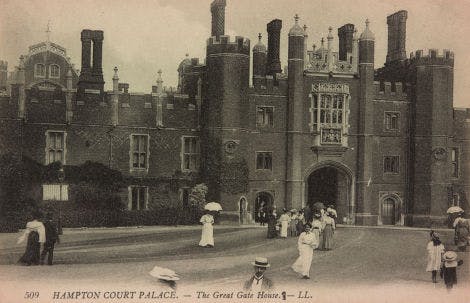
Princess Sophia at Faraday House
Like her sisters Bamba and Catherine, Sophia inherited the sizeable fortune of £23,000 from her father. This was arguably a mere fraction of the wealth they could have expected from their patrimony.
In 1896 Queen Victoria gave Princess Sophia Faraday House, then part of the Hampton Court Estate, as a grace and favour residence. The Queen also granted her an allowance of £200 a year to maintain it.
While not the palatial surroundings her birth might have afforded her, Faraday House at least gave her the security of a home and a place to entertain.
Image: Hampton Court Palace in the early 20th century. Sophia regularly walked her dogs in the palace grounds while she lived at Faraday House.
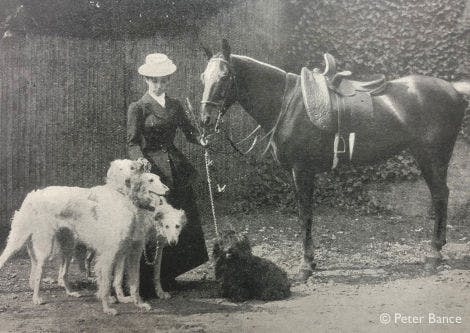
Sophia's passions and pastimes
Sophia had a real zest for life and many passions. She was sporty, playing hockey and riding and cycling frequently. She loved travel and was energetic on the aristocratic social scene.
A keen animal lover, the Princess walked her dogs in the gardens of Hampton Court Palace, for which she had her own key. She kept and showed numerous breeds of dogs including impressive Russian wolfhounds.
Sophia was a member of the Ladies' Kennel Association and showed her dogs on several occasions, including at the Annual Toy Dog Show at Crystal Palace, of which she was President in 1914.
Image: Sophia with her horse and dogs. © Peter Bance
Sophia's other hobbies included photography and music. At Faraday House she kept all sorts of instruments and sheet music, and was particularly fond of Liszt, Schübert and Ravel.
Sophia loved fashion and acquired her clothes and accessories from the finest fashion houses of London and Paris. Sophia's older sisters often warned her not to be so decadent in her purchases. This didn't stop her dressing her servants in fine burgundy uniforms, the men resplendent in gold embroidered waistcoats.
Did you know?
Sophia bought a Steinway grand piano costing £136, about a quarter of her annual budget.
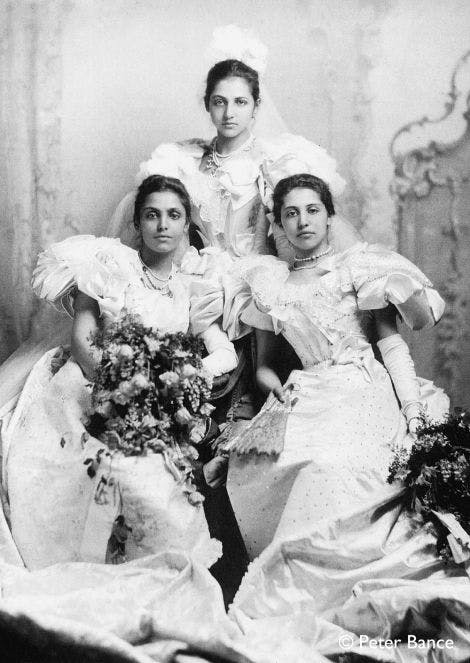
Travel to India
Sophia travelled twice to India with her sister Princess Bamba, in 1907 and 1924. The first time they visited family in Lahore and Amritsar, the second was a tour of Kashmir, Lahore, Amritsar and Muree.
The second visit was an emotional one, and nearly caused problems for the local authorities. In Lahore the crowds were excited to see the Princesses, resplendent in saris and traditional jewels, and shouted ‘The Princesses are here, the daughters of Maharajah Duleep Singh.’ Others shouted ‘We are with you, we will give you the world.’ In the end the police dispersed the crowd.
Sophia had both pride and sympathy for the Indian people, writing in one letter, 'I was delighted to see the house of my ancestors, but oh dear how primitive it all is.'
Image: Sophia (on the right) with her sisters Bamba and Catherine. © Peter Bance
A friend to many
Princess Sophia supported Indians, particularly women, throughout her life. She formed close ties with the Sikh community in London visiting the Sikh temple at Shepherds Bush regularly. She frequently attended functions organised by the India Office, including receptions for distinguished Indian visitors.
Sophia supported the Indian Women’s Education Association, volunteering at their stall at Claridges in 1921, which was arranged by the Conservative Women’s Reform Movement.
Like her father Sophia supported the Lascars Club, which supported Indian Seamen and sailors stranded in London.
Supporting her family
Sophia also paid for the education of one of her cousins, Gurdit Singh, in India.
Sophia Duleep Singh, the suffragette
Sophia was a long-time supporter of the Women's Suffrage movement and a leading campaigner in the fight for women's rights in Britain. She was an active member of the Women's Social and Political Union (WSPU), becoming a prominent member of the Richmond and Kingston-upon-Thames district branches.
Sophia was often seen selling The Suffragette newspaper at her pitch at Hampton Court Palace. Indeed, much of the information we have about Sophia's activities come from The Suffragette and Votes for Women newspapers.
Below: Sophia selling subcriptions to the Suffragette newspaper on her pitch outside Hampton Court Palace. © Museum of London
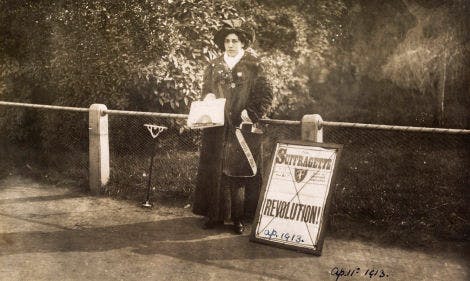
No Vote, No Census. As women do not count, they refuse to be counted. I have a conscientious objection to filling up this form.
Sophia Duleep Singh on her census return in 1911

Black Friday
Princess Sophia was present on 'Black Friday', 18 November 1910. On this day, more than 300 suffragettes marched from Caxton Hall to Parliament Square and demanded to see the Prime Minister.
When the Prime Minister refused to see them and the protestors refused to disperse, the police responded with brutality. Over six hours, 200 women were physically and sexually assaulted. Two would later die from their injuries.
That day, Princess Sophia was in the vanguard with Dr Elizabeth Garrett Anderson and Emmeline Pankhurst herself. When violence erupted, the Princess rescued a suffragette from a police officer, who was treating her extremely roughly. She then pursued the officer until she discovered his identification number (V700), in order to make a formal complaint. She stated: "The policeman was unnecessarily and brutally rough and Princess Sophia hopes he will be suitably punished."
Home Secretary Winston Churchill was blamed by the Metropolitan Police Commissioner for encouraging the police in their violent response — an accusation he later denied. Over 100 protesters were arrested on Black Friday, but all were released the next day without charge on Churchill's orders. The Home Secretary refused an official enquiry.
Image: The front page of the Daily Mirror on 19 November 1910, with the headline 'Violent scenes at Westminster, where many suffragettes were arrested while trying to force their way into the House of Commons'. © Museum of London
No Vote, No Tax!
Sophia is even better known as a member of the Women’s Tax Reform League (WTRL), which campaigned on the principal – 'No Vote, No tax!'.
In May 1911 Sophia was summoned to court and fined £3 for keeping a man-servant, five dogs and a carriage without licence. In 1913 she was summoned again to answer for keeping dogs and a carriage without a licence.
The Princess protested that taxation without representation was tyranny: "When the women of England are enfranchised and the state acknowledges me as a citizen I shall, of course, pay my share willingly towards its upkeep."
Sophia was fined £12 10s. with costs. Her refusal to pay resulted in some of her jewels being confiscated and auctioned at Twickenham Town Hall, when both were purchased by Miss Gertrude Eaton, The Honourable Secretary of the WTRL.
Later that year, a further diamond ring was confiscated when Sophia likewise refused to pay a fine. When auctioned the ring was bought by Mrs Jopling Rowe, who presented it back to Princess Sophia to much applause.
Did you know?
The WTRL refused to pay a variety of taxes, insurances and license fees, including income tax, property tax, dog tax, and even servant insurance.

Sisters in arms
Sophia's older sister Catherine was an also active member of the suffrage movement and a member of the National Union of Women's Suffrage Societies (NUWSS), which was founded in 1897.
Catherine frequently attended events promoting the Suffrage cause, and in November 1912 opened an event in Birmingham promoting 'Constitutional women's suffrage work’.
Catherine and Sophia continued to attend dinners and gatherings of the movement, even after women had won the right to vote.
Image: Catherine Duleep Singh. © Peter Bance

Wartime
During the First World War, the WSPU and WTRL temporally ceased activity to support the war effort. Princess Sophia was part of the 10,000 strong Women's War Work Procession led by Emmeline Pankhurst in 1915.
During the war Sophia was particularly keen to emulate and help the thousands of Indians who were fighting for the Allied Powers. In 1916 Sophia raised money for the Red Cross selling Indian flags at Dewar House in Haymarket. She did this with other Indian women, as part of the 'Our Day' celebration of the anniversary of the British Red Cross.
In 1918, the YMCA War Emergency Committee, of which Sophia was Honourable Secretary, organised a flag day in London and later 'India Day' for the support of India's soldiers and Labour Corps. The latter event provided 50,000 huts for the comfort of Indian soldiers.
The Princess visited and even nursed troops at Brighton Pavilion and other hospitals for Indian soldiers. Many soldiers were amazed to see the Princess, and granddaughter of the famed Maharaja Ranjit Singh, in the flesh, and she gave out mementoes of signed photographs and little ivory mirrors.
Image: Sophia during her time as a nurse. © Peter Bance
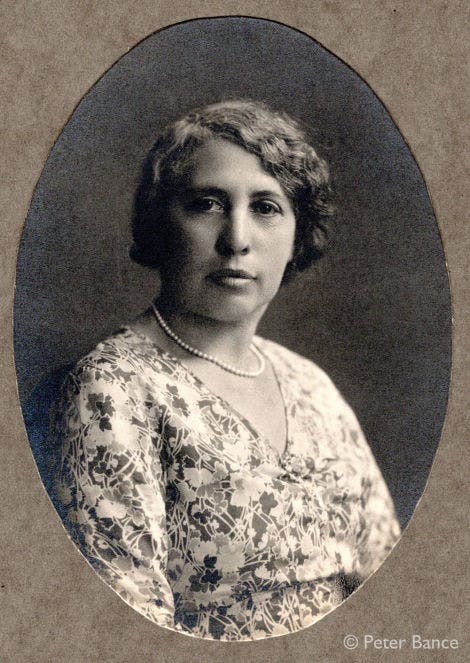
Later life
During the Second World War Sophia moved to Coalhatch House, Penn in Buckinghamshire with her sister Catherine. There she took in evacuees, siblings John, Michael and Shirley Sarbutt from West London.
The children remembered the stay fondly, recalling oriental ornaments, ample food and a parrot called Akbar. During air-raids they would squeeze into the air-raid shelter surrounded by the Princesses' dogs.
Princess Sophia died in her sleep on 22 August 1948. On her instructions, a full band played Wagner's 'Funeral March' at her cremation and her ashes were taken to India for burial.
Image: Sophia in 1930. © Peter Bance
Sophia Duleep Singh's Legacy
Although not a fan of public speaking, and often anxious not to draw attention away from fellow suffragettes, Sophia's celebrity was ultimately an important asset for the Suffragette movement.
In 1918 the Representation of the People Act gave some women over the age of 30 the right to vote in British parliamentary elections. However, this was not the end of the matter for Princess Sophia who continued to campaign for equality all her life.
Passion for the cause
In the 1934 edition of Women’s Who’s Who, Sophia listed Advancement of Women as her only interest.
Suggested reading
For more information on Sophia Duleep Singh and her family, please refer to the following books and websites:
- Sophia: Princess, Suffragette, Revolutionary by Anita Anand (London, 2015)
- Sovereign, Squire & Rebel: Maharajah Duleep Singh by Peter Bance (London, 2009) and accompanying website.
- Asians in Britain: 400 Years of History by Rozina Visram (London, 2002)
Watch Sophia Duleep Singh: Suffragette Princess Mini Documentary
As daughter of the deposed Maharaja Duleep Singh and goddaughter to Queen Victoria, she started out as a socialite, but soon became a revolutionary.
Anita Anand explores the extraordinary life of Princess Sophia Duleep Singh in this mini-documentary.
Video Transcript of Sophia Duleep Singh: Suffragette Princess
Follow along with an interactive transcript of Sophia Duleep Singh: Suffragette Princess on YouTube. A link to open the transcript can be found in the description.
Listen to the podcast
In this episode, we’re bringing you a talk from our archives by journalist and author Anita Anand, on the extraordinary life of Princess Sophia Duleep Singh.
It's difficult to do justice to the life of this incredible woman, but Anita Anand dives into Sophia's story and brings it into the light, from her Sikh family heritage to her involvment in the fight for women's suffrage.
More episodesBROWSE MORE HISTORY AND STORIES

The Indian Army at Hampton Court Palace in 1919
A forgotten story

Historic hauntings at Hampton Court Palace
Centuries of ghosts and grim tales
EXPLORE WHAT'S ON

- Exhibition
- Things to see
The Indian Army at the Palace
Explore the forgotten story of Indian Army soldiers who camped at Hampton Court Palace in the early 20th century, through a new exhibition of previously unseen objects, photographs, film and personal stories.
- Until 29 September 2024
- In line with palace opening hours
- Hampton Court Palace
- Included in palace admission (members go free)

